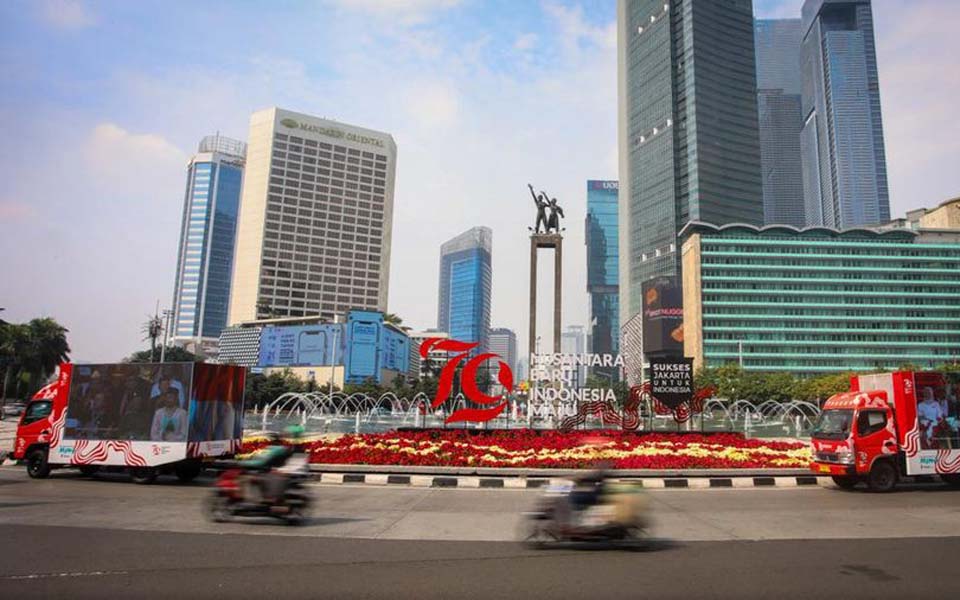Oleh Ahmad Arif – The global financial crisis, which began far away in the United States, appears to have also become a bugbear for workers in Indonesia. Starting with national industries that are dying because global markets are stagnating, millions of workers are faced with the threat of dismissal. Since early December, tens of thousands of these workers have already been sacked.
The threat of an unemployment explosion has reared its head a consequence of stagnation in the labour intensive real sectors such as the textile industry. The Indonesian Textile Association (API) estimates that if no effort is made to save the national textile industry, by mid 2009 the number of employees in the industry that will have been dismissed will reach 500,000 people. So far, only 15,000 employees have lost their jobs.
Workers, who should be an asset for the sustainability of the industrial machine, are in point of fact are only viewed as small screws in the machinery. And if the industrial machine dies, it is these small screws called workers that will be removed first.
Disguised dismissals
The open rate of unemployment in Indonesia, which currently stands at 8.46 percent or around 9.43 million people, according to one observer, is far below the real level. “Hundreds of thousands, even millions of people, have been sent home because industries are in decline. Many companies should have closed by now, but they have intentionally refused to declare bankruptcy. Because, the cost of closing down a company is extremely expensive”, said one observer.
The modus operandi currently becoming a trend for industries to gradually reduce the number of employees is through the expression “sending employees home”. A simple calculation of how this works is a follows. For example, take a labour-intensive company with 1,000 workers, whose average wage is 1 million rupiah per month. If the owner declares the company bankrupt, they have to pay a minimum severance equivalent to 1,000 workers times 1 million rupiah, times 20 months [severance pay is calculated according to length of employment and can vary anywhere between 3 to 23 months – JB]. So the amount that has to be paid out is 20 billion rupiah.
It is a different matter however if the employer deposits the 20 billion rupiah in the bank. With an interest rate of 10 percent, they can obtain 167 million rupiah a month or 2 billion rupiah a year. With the money from this deposit, the employer then elects the option of sending 20 percent or around 200 employees home.
By sending employees home, the employer is only obliged to pay a basic wage, without having to pay allowances for food, transport and for being present at work. The total amount of money therefore paid to the 20 percent of employees sent home is only 140 million rupiah per month, so this is still less than the monthly interest of 167 million.
Companies that send their employees home do indeed still continue to produce, although not with any enthusiasm. Slowly but surely, the employees sent home will resign or seek new jobs so the company does not need to pay large amounts of severance pay.
“These employees who are sent home, are they included in the statistics as unemployed or not? What is clear, is that almost every week in industrial centres we can find companies that have closed through such a process”, said the observer.
Latent problem
Even without the global financial crisis, Indonesia is already faced with the threat of an explosion in unemployment, particularly job seekers with low levels of education. As much as 55 percent of the national work forces has only graduated from primary school, while graduates with a degree number only 1.3 percent.
In point of fact, national economic growth over the period 2005-2007, which reached 5.8 percent annually, was already unable to hold down unemployment levels. The theoretical formula that 1 percent of economic growth will absorb around 296,000 new workers can no longer be used as a reference, because even when the national economy was growing, the number of unemployed still did not decline.
Job opportunities continue to grow slowly in the midst of a flood of capital entering Indonesia through share trading on the capital market. Most of the industries that have been growing meanwhile are in the capital intensive sectors, such as mining, which have been driven by increases in the price of these commodities.
Whereas looking at the educational composition of the work force, those who are most needed by the state are in the labour intensive industries. The problem is, the labour intensive industries in Indonesia are unable to develop.
Indeed, some of the labour intensive industries that already exist, such as the shoe, textile and ready-made garment industries, have already closed down or moved their factories to other countries. The various rigid and high-cost investment regulations are reason for the lack of investment in labour intensive industries.
In attempting to overcome the problem of the low absorption rate of labour, up until now the government has simply relied upon unemployment relief programs through short-term labour intensive projects. One such program is the National Social Empowerment Program (PNPM), which employs people on government infrastructure projects.
A number of observers however, warn that short-term programs such as this cannot be used to absorb labour over a long period. Job opportunities must come from investment in industry.
Worker-boss relationship
Employers also complain about industrial relations with workers, which they see as a burden. The reformasi era was coloured by efforts to restore the labour rights that were emasculated by the New Order regime of late President Suharto. However, the rules and regulations to provide protection to workers are considered to excessively favour labour.
While conceding this, in practice the workers’ fortunes are not much better. The number of trade unions has indeed swelled, but conflicts between employers and workers have steadily worsened and workers remain in a weak position. Employers who want to avoid financial losses in fact apply labour systems that harm workers. For example, popular at the moment is contract labour and outsourcing systems that circumvent a company’s obligation to pay allowances or provide full rights to employees. The other strategy is to “send employees home”, to circumnavigate the obligation of paying severance pay.
It is because of this therefore, that there must also be a synergy in the finalisation of labour regulations and efforts to reduce the high cost of investment. We still need new investment in the real sector. The government must move quickly to improve policies to promote the realisation of new investment, particularly in the labour intensive industries.
Without improvements in the business environment and industrial relations mechanisms, conflicts between the bosses and workers will certainly continue. This will be compounded by the global financial crisis that is yet to show any signs of improving, so the next few years are likely to be grim ones for both workers and bosses.
[Translated by James Balowski.]















